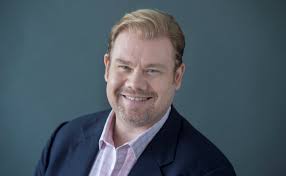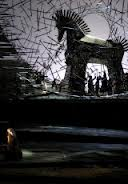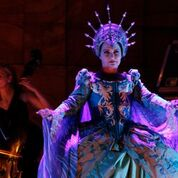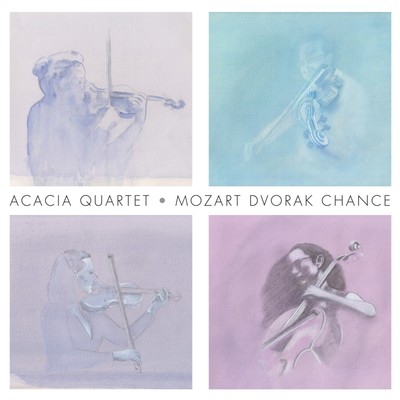Concert Review: Simone Young Conducts Mahler’s Third Symphony/ Sydney Symphony Orchestra
Concert Review: Simone Young Conducts Mahler’s Third Symphony
Sydney Symphony Orchestra
Concert Hall, Sydney Opera House, Wednesday February 19, 2025
It was a resplendent start to the Sydney Symphony Orchestra’s 2025 season, with Chief Conductor Simone Young at the helm for a dazzling account of Mahler’s Symphony No 3.
In a year of music built around the theme of ‘connection,’ Young’s programming has linked the three annual season openings of her tenure as Chief Conductor with a performance of a Mahler symphony, repertoire which she clearly relishes and translates into brilliant performances from her expert forces. Mahler’s Symphony No 5 was a memorable curtain raiser in 2024 with the Symphony No 1 in 2023. Mahler’s Symphony No 2 featured in an opening of sorts in 2022 celebrating the mid-year re-opening of the Concert Hall of the Sydney Opera House after its comprehensive refurbishment. This landmark concert was recorded by Deutsche Grammophon and released this week. It is the first Australian orchestra to be featured on the prestigious label.
For Young, 2024 was a year of milestones. She became the first Australian and the first woman to conduct the Ring Cycle in Bayreuth and won the International Opera Ward in the conductor category. In the last weeks she has been conducting Richard Strauss in Berlin and Wagner in Milan.
An excellent talk by Dr David Larkin in the Northern Foyer of the Concert Hall preceded the on-stage activity which began with an infectiously rhythmic and buoyant acknowledgement of country by Kamilaroi man Adam Manning, introduced by the percussion section but with the entire orchestra joining in on rhythm sticks.
Mahler’s third symphony which Young describes as a puzzle to be solved, offers many solo moments, ably performed by very fine musicians of the orchestra led by concert master Andrew Haveron. The evening’s line-up also featured contralto Noa Beinart with the impeccable singing of the women of the Sydney Philharmonia Choirs and the Sydney Children’s Choir. Sydney audiences were introduced to the rapturous singing of Noa Beinart in the SSO’s concertante production of Das Rheingold in 2023, when she emerged from within the plush wall of orchestral sound as Erda, a powerful and thrilling voice, laden with warning.
Beinart sings Wagner with the SSO again in Siegfried, the third of the Ring operas in concert in November, but on this night, she was a star that shone most brightly amongst many stellar performances. The beauty and gravitas of Beinart was well-suited to the words of Nietzsche, taken from Also sprach Zarathustra and to Mahler’s musical expression of his world at that time.
The third symphony may not have some of the appeal of the first, second, fifth and eighth symphonies, but it has its own charm and is a mighty undertaking with a full orchestra and off-stage flugelhorn. Lasting nearly 100 minutes, it is an exposition of some of the most profound and all-encompassing musical perspectives on the many dualities of life and death, religion and nature, transgression and redemption.
The completed symphony premiered in Germany in 1902. Two years later, Schönberg described it as “the most ruthless truth” after its premiere in Vienna. Yet, William Walton dismissed it saying, “You can’t call that a symphony.” Mahler himself wanted the symphony to “be like the world. It must embrace everything.” And in a letter to his friend the singer Anna von Mildenburg, wrote that it should be “the like of which the world has never heard.” At the time, symphonies No. 5 and No. 8 were yet to come. Having sung in the chorus of this symphony on several occasions and attended many performances but memorably one by the Berlin Staatskapelle conducted by Maestro Zubin Mehta with mezzo-soprano Okka von der Damerau in Berlin, I have observed that audiences are still overwhelmed by this piece, even with the knowledge of the awe-inspiring symphonies which came later.
Eight declamatory French horns made the opening statement which moved to low bassoons, jagged trumpets and funereal drumbeats. Young’s direction was indeed “vigorous and decisive” as marked and stayed true to Mahler’s own original description of summer marching in with its jaunty, military marching theme. Young broadened the ominous opening to an elated, swirling conclusion uplifted by sparkling glissandi from the two harps.
Mahler wrote the second movement as an expression of “what the flowers of the meadow tell me.” Young directed a gently fragile opening supported by the lightest of touch and tempi, bringing an innocence to the unusual Menuet in two parts featuring the oboe, viola and flute with pizzicato strings.
The third movement, in Mahler’s words “what the animals of the forest tell me” directed to be played “without haste” evoked the woodland with delicate bird calls and the distinctive offstage flugelhorn emulating the posthorn, a highlight of the evening and of the piece.
Beinart took ownership of the fourth movement, “slowly and mysteriously” weaving her magic with impeccable control in her account of Mahler’s musical depiction of the night as described in words by Nietzsche.
Much of Mahler’s symphonic music is infused with song and its refences. The third symphony uses the words of the Wunderhorn song in its fifth movement with sunny choral voices joining in, moving closer to the heavens, depicting bells and angels. The children’s choir peals and imparts an innocence that only the sound of children can bring.
Finally, the sixth movement, which to Mahler represented the ultimate “what love tells me” was played with an aching, introspective beauty. Shivering strings underlay warm brass tones, moving slowly to a radiant conclusion in the trumpet-happy key of D major, completing the arc that began in the D minor first movement with the metaphysical, moving through the organic joys of nature, to the abstract concepts of redemption and love.
I left the concert happily overwhelmed, feeling that Mahler did achieve his goal in having the symphony embrace “everything.” No doubt millions of words have been generated in exploring this piece. Yet, sometimes it is a relief to set aside expectations, become immersed in the sound, give in to the emotions and take the journey that Mahler laid out for us, especially when it is guided by the compelling expertise of Young and the distinguished musicians of the Sydney Symphony Orchestra.
Shamistha de Soysa for SoundsLikeSydney©
This concert will be performed again at the Sydney Opera House on 20, 21 and 22 February 2025.







